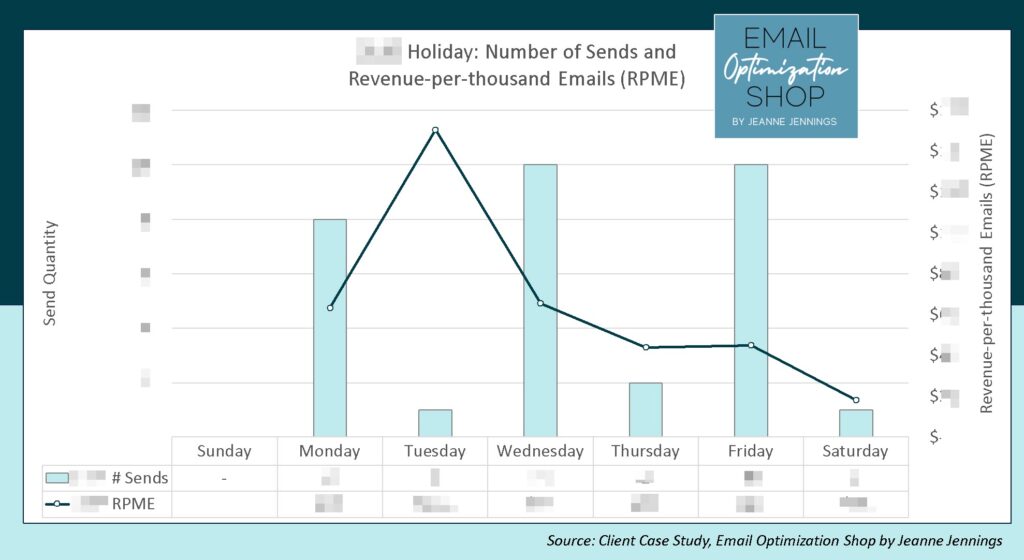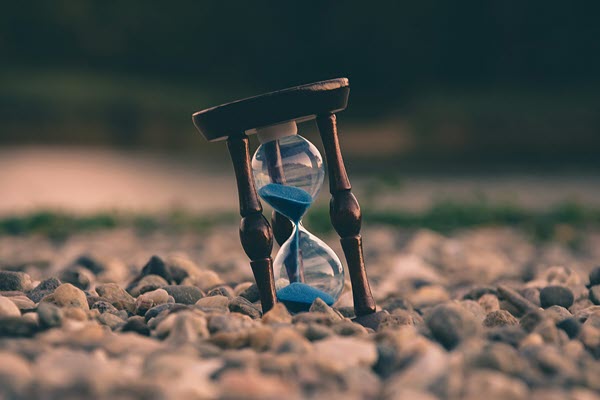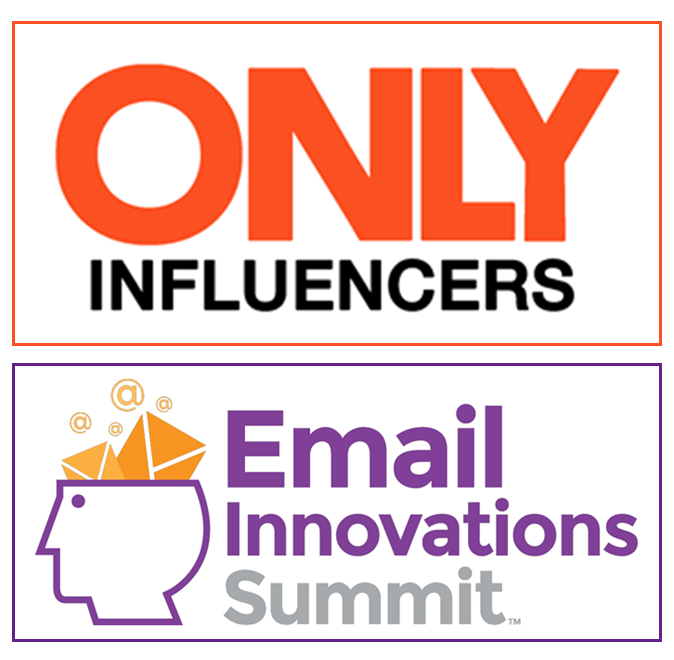Do you ever see those reports touting the ‘best’ day and time to send email? I used to get asked about them or pointed to them all the time, then it seemed to stop (thank goodness). But it appears that they are back in fashion, as a friend sent me one last week.
Here’s the thing. It’s pseudo-science. Think about it.
If the report says the best day/time to send is 3:00 PM ET on Thursdays…
And then everyone started sending their email at 3:00 PM ET on Thursdays…
The all our inboxes would be bombarded with email at 3:01 PM ET on Thursdays…
And the best day/time to send email would actually be any time EXCEPT 3:00 PM ET on Thursdays.
And when they break down send time by your goals – like send this day and time to optimize opens, but to optimize clicks send at this day and time…
Sigh.
Because this data isn’t about your list. It’s not about your content. It’s not about your product or service, your offer… you get the idea. They may break it down by industry, but it’s still not an easy button. You still should not take it as gospel and start sending at the day and time they designate.
There are Other Options
There are much better ways to determine the best day and time to send email to your list. They aren’t that difficult, and they will give you results that are much more likely to be better than just following what some third-party report says. All of these options factor in knowledge of your audience and your content — which no third-party report can.
Here are five ways to do this that I’ll discuss here:
- Reason and Logic
- Website Traffic
- Historical Data
- A/B Split Test
- Send Time Optimization
You can use them solo or, for added accuracy and confirmation, in combination. Let’s talk about each in more detail…
1. Reason and Logic
This takes no special tool – it relies completely on your own knowledge of your audience and your content. I’ve been using this since I began my career in digital marketing more than 20 years ago.
Here’s how you do it. Think about your audience, think about your content, think about when you think they would have time to read your email message and take action. I also build in some general guidelines, based on my experience:
- Sending in the middle of the night when people are asleep is a bad idea. Then your message is one of many in the inbox first thing in the morning, and it’s likely to be overlooked or deleted as most people jump in to start their day.
- If you are sending a B2B message, it’s best to send during business hours. If you’re in the United States and sending to people on both coasts, that gives you a window of 12:00 Noon ET (9:00 AM PT) to 5:00 PM ET (2:00 PM PT).
- Even with B2C messages, sending during the business day (9:00 AM to 5:00 PM recipient’s time) usually works well. Although I’ve had occasional ‘oops’ situations where we’ve sent a B2C email on a Friday night or a Saturday and they often do well.
- There’s always been ‘conventional wisdom’ that you should not send on a Monday or a Friday because performance will be lackluster.
- I don’t find this holds for Mondays.
- I have found that is often true for Friday afternoons, but not necessarily Friday mornings, in the case of B2B sends.
- For B2C sends, I often find Friday afternoons to be a good time to send email.
- But I always approach Friday sends with caution and test into them.
Here’s an example:
Let’s say that you are sending a weekly email newsletter with industry news to your audience of white-collar professionals. They work at desks (albeit, likely in their home offices post-pandemic) and are probably in front of their computer between 9:00 AM and 5:00 PM in their local time zone.
I dealt with this scenario over and over again when I was head of email product development for Reed Business Information, part of Reed Elsevier. They had over 100 print publications and my team and I helped revamp existing and create new email newsletters for most of them.
When I reasoned it out, I thought about my own behavior (in many cases, I was not unlike our target audience). I was an ‘eat-lunch-at-your-desk’ person. And while I ate, I used to read industry newsletters, print and online. I wanted to keep up on industry news, but it seemed a bit frivolous to be reading when I should be doing actual work. So reading them at lunch was the perfect compromise.
So using reason and logic, for audiences that seemed to be professionals like me, we would send our email newsletters to arrive in the inbox just before lunch on a weekday – between 11:30 AM and 12:00 Noon in the recipient’s time zone.
And for other audiences, I work with the client to do the same reasoning on when they might have time to engage with our email.
2. Website Traffic
All you need for this method is Google or another Analytics package, with data on your website traffic.
Here’s how you do it. It starts with the assumption that your website traffic levels are a good gauge of when people have the time to investigate your product or service further.
Here’s an example:
I was consulting for an organization that helped people earn their GED. We looked at when their web traffic peaked; it was highest on two different weekdays, in the late afternoon (we were in the Eastern time zone).
So we did a little A/B testing (more on that below), and we found that the sends done during the time that web traffic was peaking, late afternoon on these two particular weekdays, actually were the most effective at driving engagement and conversions.
3. Historical Email Data
For this method you’ll need access to historic email metric data, including conversion rates, revenue-per-email (RPE) or Revenue-per-thousand-emails (RPME), or whatever your key performance indicator (KPI) is for each send, with day and time notations.
Here’s how you do it. Group your sends by KPI, so you have one group where the KPI is a conversion rate, and a second group where the KPI is revenue-per-email or another revenue-based metric.
Rank each group by KPI, with the top performers at the top and the worst performers at the bottom.
Analyze the send days/times for top performers and compare them with the send days/times for bottom performers. You’re looking for clear directional data on which days/times seem to deliver top performing emails, and which days/times seem to drive emails to perform less well.
Here’s an example. I was doing a holiday campaign for a client. I analyzed the previous year’s campaign by calculating an aggregate revenue-per-thousand-emails-sent (RPME) figure for each send day. I also include how many sends happened on each day. You can see my chart below.

We were looking for two days to send holiday campaigns initially. We discounted the high RPME on Tuesday, since that was based on just one send. The second and third highest RPEs were on Mondays and Wednesdays, so those were the days we initially did our holiday sends. Side note: the only other day with a significant number of sends was Friday. The RPME for Friday was roughly 30% lower than the RPMEs for Monday and Wednesday.
4. A/B Split Test
Once again, you don’t need any special tools to use this method. This is one of my favorite ways to determine the best days/times to send email.
I like to start by using one of the other methods to build a hypothesis about which send days/times should deliver better results. While you don’t have to do this, I find that this type of research gives you higher quality days/times to test. It also narrows the options of what to test.
Once you decide what to test, you do an A/B split test. Some tips for getting clear results:
- Make sure the only difference between the 2 sends is the day and/or time – everything else should remain the same
- Ideally use a business metric as your KPI – a revenue-based metrics for sales, conversion rate metrics for leads or other non-revenue actions. When using a conversion metric, your denominator should always be your non-bounce send quantity.
- Check your results to be sure they are statistically significant.
Here’s an example. In an earlier example I spoke of a client where we used historical data to determine that holiday sends would perform best on Monday and Wednesdays. In mid-October our plan was to go to 3 sends a week, so we needed to choose a third day to send.
We used an A/B split test to decide. We had very large send quantities so we were able to test Tuesday versus Thursday versus Friday. We arbitrarily chose Tuesday as the ‘control’ – which we would gauge the other two days against. Our KPI was revenue-per-thousand-emails-sent.
Here are the results:

Thursday delivered an RPE nearly 60% higher than Tuesday (the control); Friday performed the worst, at nearly 60% less than Tuesday (the control).
So our third sending day for holiday emails was Thursday; check out the full case study if you like.
5. Send Time Optimization
I’ve saved the best for last. I often joke that there are no ‘easy buttons’ in email marketing. But send time optimization (STO) actually is about as close as you can get to an easy button.
Your email marketing platform (or an outside vendor you bring in) has to offer a STO tool; there are other names, but STO seems to be the one that most people use for this functionality.
There are two ways these tools work. Some look at the list you’re going to send as a whole and select the best time to send the email to the whole list, based on overall list performance. They do this using historic data from your own list, which is what makes this better than a third-party recommendation.
There are other STO tools that take a more granular approach; they look at your list and deliver the email to each individual on your list at the best time for that individual. So, if you schedule the send for 10:00 AM ET, some people will get the email at 10:01 AM ET, others at 11:50 AM ET, others at 3:00 PM ET, etc.
Full disclosure: I’m not a huge fan of STO. I like the concept, but there is one big reason that I rarely use these STO. In most cases, the send time is being optimized based on opens or clicks; I don’t know of any that optimize to a bottom-line metric like conversion rate or revenue-per-email (RPE). And it’s been my experience that the highest open rate and highest click-through rates are rarely indicators of the highest conversion rate or RPE.
In Conclusion
One more caveat I should have probably mentioned earlier: in my experience, as long as you employ reason and logic, the day or time you send doesn’t necessarily have a dramatic impact on your email performance.
There are other, more important things, which will – like the content of your email messages. Which is why I like to spend my time and effort testing content strategies and tactics, rather than the best day or time to send.
Give one or more of these methods a try and let me know how it goes.
Until next time, be safe, stay well,


Photo by Aron Visuals on Unsplash






